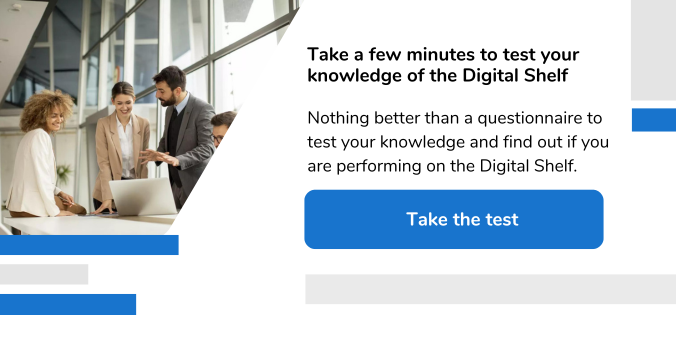Social commerce is a great business opportunity and is growing three times1 faster than traditional eCommerce.
Social commerce is the act of using social networks to generate sales: 73% of businesses2 are already using it for this purpose and 79%2 intend to use it as a selling channel within the next three years.
To get the most out of social commerce, it is important to choose the most relevant social networks, to know the specifics of each one and to use their features properly: message services, augmented reality filters, tag systems, purchasing options…
Find out how to get the most out of social commerce and increase your sales.
#Social networks: an unavoidable selling channel
Social networks have become an essential channel for increasing selling opportunities.
More and more shoppers are using these platforms with the three most popular platforms (Facebook, Instagram, and YouTube) boasting 6 million users3.
On each social network that they use, shoppers are more likely to recommend a brand4 to their « circle of influence ». They also tend to be looking for « inspiration and/or solutions5» and are therefore really in a shopping dynamic. In 2021, 64% of shoppers6 made a purchase through a social network.
#Social commerce: get the most from the social networks
#Choose the right networks
There is so much selling potential in social commerce, but to get the most out of it for your business you must choose the right networks for your products.
Each social network has its own characteristics, and it is important to understand them. For example, Facebook is the most popular platform with 2.89 billion active users each month7. It aims to create contact between its users and is characterized by the diversity of its user profiles8. More specific, Instagram is great for sharing the brand's universe and targets a younger audience with 81% of its users8 aged between 16 and 25.

The business also needs to work on its content to adapt9 it to the specifics of each social network. As Facebook is the platform reaching the widest audience, it is important to use content that encourages shoppers to react and to interact (shares, comments, likes…). The more « visual8» Instagram requires high quality photos and publications that showcase the brand's identity and visual specifics.
#Use the features of each social network
To take full advantage of social commerce, a business must make use of all the potentials of each social network platform and exploit their specific features.
One example is Instagram Shopping where a company can directly import their product catalog5 into the platform and offer up their references through the « shop tab » in their profile. Through a « tag5 » system, they can also identify products in each publication: photo, story, video… This feature is an essential means of increasing sales as 62% of shoppers say they are more interested in a product after having seen it in a story.
Instagram Shopping also has features intended to simplify the buying process for shoppers. Through the platform, they can create a « wish list », click the « Add to cart » button and pay with « Facebook Pay ». Thanks to these features, every month 130 million Instagram10 users click on a shopping publication.
#Create connections with shoppers
To generate revenue through social commerce, it is important to encourage dialogue between the customer and the brand.

To create this « dialogue12 », companies can use the social network's message service13 to answer the questions that shoppers are asking « before, during and after their purchase14 » : product availability, returns policy, order tracking… They can also regularly post engaging publications to encourage interaction with the brand: customer testimonials, competitions, sharing of user generated content (UGC)…
It is essential to make these efforts to customize and individualize relations with customers as they spend a lot of time on social networks (147 minutes per day15 on average) and want to feel close to the brands they follow.
#Social commerce: get noticed in 2022
To remain competitive, businesses must keep up with the latest trends on social networks.
For example, Snapchat's « augmented reality filters16 » are attracting an increasing number of shoppers.
To help companies get the most out of this trend, the platform launched « Catalog-powered Shopping Lenses ». Through an « augmented reality shopping » interface, shoppers can access a brand's product catalog and try on products virtually. If they like the product, they can then access additional product information and buy the product through a clickable URL link which will take them automatically to the brand's website.
For businesses the Snapchat interface brings a real competitive advantage improving an eCommerce site's conversion rate16 and reaching a wider audience with a daily figure of 200 million consumers16 using the platform's filters.
Social networks bring your business to a wider audience and increase your sales. To get the most from this selling channel it is important to implement a real social commerce strategy, to keep up to date on the trends on each social network and to provide the right information at all times.
1
Le social commerce en croissance 3 fois plus rapide que le e-commerce classique. (2022, January 6). larevuedudigital.com.
2
Gomez, R. G. (2021, May 4). What is social commerce ? The stats, examples and tips you need for 2021. sproutsocial.com.
3
Vialenc, J. V. [Social commerce] Définition, avantages et inconvénients et comment mettre en place cette stratégie dans votre e-commerce. doofinder.com.
4
Les Echos. Publicité, réseaux sociaux : créer un lien de confiance avec les consommateurs. lesechos.fr.
5
Leuenberger, M. L. (2022, March 7). Social commerce en 2022 : définition et conseils pour vendre sur les réseaux sociaux. shopify.com.
6
Reisacher, A. R. (2022, January 5). Social commerce : 64 % des utilisateurs ont effectué un achat via les réseaux sociaux en 2021. blogdumoderateur.com.
7
Statista. (2022, March 8). Most popular social networks worldwide as of January 2022, ranked by number of monthly active users. statista.com.
8
Grandrie-Kalinowski, L. G. (2022, March 31). Réseaux Sociaux : Guide complet pour votre E-commerce. ecommerce-nation.fr.
9
Sansonetti, J. S. Social commerce : Définition, conseils pour votre entreprise et tendances à venir ! wizishop.fr.
10
10. Newberry, C. N. (2020, February 19). 37 statistiques Instagram que les marketeurs doivent connaître en 2020. blog.hootsuite.com.
11
Instagram. Découvrez et achetez les produits de vos marques et créateurs préférés. about.instagram.com.
12
Thimothy, S. T. (2022, March 24). Social Media Is About Creating A Dialogue, Not Sharing A Monologue. forbes.com.
13
Sterling, G. S. (2021, August 17). Le social commerce, nouveau champ de bataille des retailers ? journaldunet.com.
14
Kharbouch, A. K. (2022, April 4). Les 7 avantages du social commerce pour les marques. blog.smart-tribune.com.
15
Statista. (2022, March 21). Daily time spent on social networking by internet users worldwide from 2012 to 2022. www.statista.com.
16
Cochard, R. C. (2022, February 25). La réalité augmentée : un levier majeur pour les marques sur les réseaux sociaux ? journaldunet.com.
17
Corot, L. C. (2022, January 31). Snap poursuit son offensive dans le shopping en réalité augmentée. usine-digitale.fr.
18
D'Henry, B. D. (2022, February 3). La réalité augmentée est l'avenir du shopping en ligne. blog.sensefuel.com.







